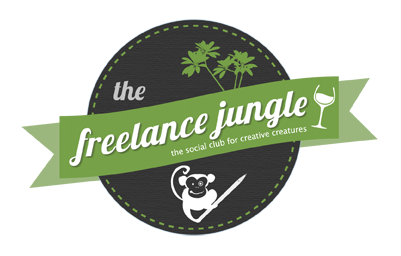Do you have a love-hate relationship with words? (Puts own hand up). Most people do, even professional writers.
But here’s a little secret that they don’t teach you in business school, great writing can be taught, and you don’t have to be a trained copywriter to write searchable, bold and hardworking content that makes your audience stop and take notice.
If you’re a newbie freelance writer, business owner or just want more people to open your work emails, this is the post for you!
10 tips for writing copy that people want to read
Always free-write without editing
Take a deep breath and repeat after me: No one writes a perfect piece first go. Now, don’t you feel better?!
Repeat this mantra to yourself whenever you sit down to write a new web page, blog, brand document, and so on. Giving yourself the creative freedom to explore ideas and clarify your thoughts is the only way you’re going to find those meme-able sound bites.
Understand why you’re writing the piece
What’s the purpose? What do you hope to achieve? Maybe you’re sharing a new product with your audience or you’re writing direct response website copy for a client. Do you want to share your personal journey, inspire, educate, or all three?
Jot your answers down at the top of the page and use them to help give your writing direction. Writing freely is good. Writing blindly is not.
Know who you’re talking to
You know when you read copy that makes you think “Wow she’s speaking to me!” This happens because the writer was thinking about the reader as she wrote. Get really detailed on what your reader’s life is like. Consider noting things like their gender, age, income, and location, and how they spend their free time and what they’re passionate about.
If you’re scratching your head wondering how to find basic client information, the easiest places to start are your website analytics, Facebook Insights and good-old-fashioned surveys. Knowing these aspects about your reader will help you use concrete examples in your writing.
Discover your ideal readers’ pain points
Answer these three questions in detail: What does my reader’s day look like right now? What would their perfect day be? And how does my business make that happen? You’re trying to identify the problems your reader is trying to solve, and the challenges they face.
Include a call to action
What do you want the reader to do next? Maybe you want them to sign up to your newsletter or share a resource with a friend. Be clear about what action you want them to take once they’ve finished reading. Then spell it out for them. Don’t assume your reader will know what the next step is. Your call-to-action should explain how you intend to solve your reader’s problem using simple, clear and practical language.
For example: While “contact us” is better than nothing it doesn’t let the reader know what they’ll get when they complete the action. Try something like this instead: “Contact us today to schedule a free 30-minute consultation.”
Edit for grammar, punctuation and SEO
Every writer has their quirks. With time you’ll notice what words you spell wrong in your first draft, and what grammar rules you commonly break. Make a note of these so you can double check them when you reach the editing stage.
As a basic rule always remove: extra words, repetition, and reduce prepositions, jargon and acronyms. Always write in an active voice and use positive words where possible. And don’t forget to add important keywords that will help your piece be discovered online. Remember: Never edit straight away. Give yourself a day or two before you come back to edit the piece.
Write a read-me-now heading
On average, five times as many people read the headlines compared to the body copy. So they’re pretty darn important. A great headline convinces people to read your copy while a poor one sends potential customers to someone else’s business.
Your headline should try to do at least one of these things: be unique, ultra-specific, convey a sense of urgency, and be useful. Every time you write a headline look over your ideal customer profile and how your product or service solves their problems. And ask yourself if your readers would be interested and intrigued? If not, re-write your heading until it’s clear, concise and specific.
Be genuine
Don’t just sell people stuff. It’s so refreshing to get copy from people who are human beings with real lives: imperfections, failures and daily struggles. Being genuine is how you build relationships and attract your ideal customers.
Often this means being vulnerable with your audience. This doesn’t mean you need to share everything, but make sure it doesn’t feel like you want something from them all the time and give nothing in return. Remember: People don’t want to be sold to, they want their problems solved.
Don’t try and be clever
Clear and concise copy works better. As writers, we can sometimes get a little smug when it comes to crafting copy. While in some cases it may be important for you to experiment with humour, analogies and words, make sure your choices are adding value, not subtracting from the purpose of your piece.
Often it’s the simplest idea that works best. If you find yourself thinking, “That’s so obvious, why hadn’t I thought of that before,” it probably means you’re onto a winner.
Think about layout
Use headings, sub headings, lists, short sentences, images, and embrace white space. Generally, people don’t read more than the first paragraph. For the most part, this has to do with readability. No one wants to wade through a copy dump to get to the juicy bits.
Make it easy for your reader to scan your copy and recognise the important stuff by breaking up the text. Read: I’m giving you permission to add cat videos throughout your copy, where relevant of course!
Print off this checklist and pin it near your desk
- Always free-write without editing
- Understand why you’re writing the piece
- Know who you’re talking to
- Discover your ideal readers’ pain points
- Include a call to action
- Edit for grammar, punctuation, and SEO
- Write a read-me-now heading
- Be genuine
- Don’t try and be clever
- Think about layout
 Rachel Kurzyp is a Melbourne-based writer and communications consultant who helps make people and businesses fabulous on the internet. Over the past 10 years, Rachel’s worked with small businesses, brands and NGOs across six continents and has been published in Frankie, The Big Issue, Daily Life, and on SBS. When she’s not writing, or running her Write Copy People Actually Read workshop, Rachel can be found watching Netflix in her Smurf-coloured PJs.
Rachel Kurzyp is a Melbourne-based writer and communications consultant who helps make people and businesses fabulous on the internet. Over the past 10 years, Rachel’s worked with small businesses, brands and NGOs across six continents and has been published in Frankie, The Big Issue, Daily Life, and on SBS. When she’s not writing, or running her Write Copy People Actually Read workshop, Rachel can be found watching Netflix in her Smurf-coloured PJs.
Get in touch via Rachel’s website, Twitter or LinkedIn.

